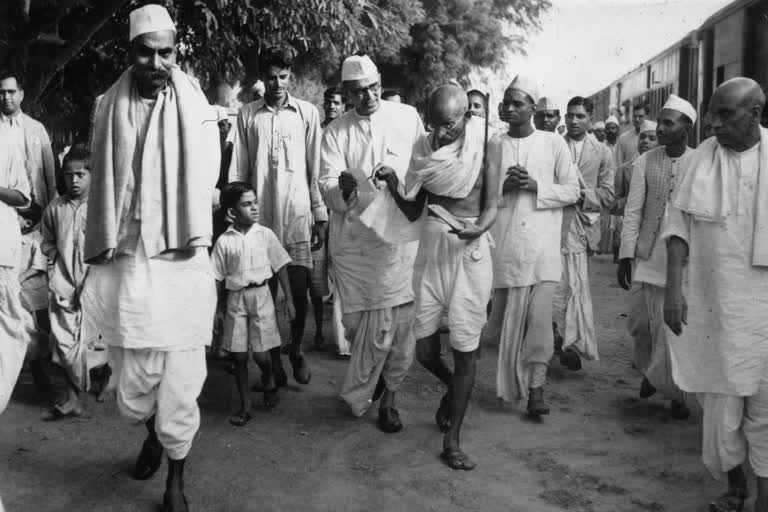Hyderabad: Satyagraha was Mahatma Gandhi’s unique contribution to political and social activists to wage a war against any form of injustice without shedding blood. It was largely through the non-violent Satyagraha that India won Independence from the British rule. Satyagraha enabled millions of unarmed men and women to revolt against the imperial rule of Great Britain. It was the self-confidence of the people instilled in them through the Satyagraha movement that gave them the courage to tell the British to ‘Quit India’.
There were violent attempts in the past to overthrow the British rulers in 1857 and thereafter. The first major attempt was the rebellion by the sepoys led by Mangal Pandey. The rebellion was ruthlessly crushed by the British. The last of the Moghul emperor Bahadur Shah Zafar was arrested and deported. There was the Chittagong armed rebellion which too was crushed promptly. Individual revolutionaries such as Khudiram Bose too took up arms against the British. These were acts of supreme sacrifice and bravery. However, people at large, though sympathetic to their cause, did not pick up the courage to rally behind these individual revolutionaries.
Mahatma Gandhi, having successfully launched a Satyagraha movement against the racist South African white regime, after returning to India in 1915 was instrumental in mobilizing millions of unarmed men and women in launching a mass movement against the British rule. His first experiment in Satyagraha in India was carried out in Bihar’s Champaran in 1917 against the grossly exploitative system of indigo farming. The Champaran satyagraha resulted in the abolition of the compulsory indigo farming and showed to the people the efficacy of non-violence.
The ordinary people of the country realized that they too could challenge the mighty British Raj without taking up a gun or throwing a bomb. Satyagraha became the common man’s ‘weapon’. Soon after the Champaran Satyagraha came the Khilafat movement led by Maulana brothers Shaukat Ali and Mohammed Ali in which a large number of Muslims participated. Mahatma Gandhi lent his full support to the Ali brothers because of which the Khilafat movement, though widespread, remained non-violent. Khilafat was a nationalist movement which saw exemplary unity among the Hindus and Muslims, a feature also seen during the country’s first war of independence of 1857 in the form of the rebellion of the sepoys.
It was during his stay in South Africa that Gandhiji realized the potential of Satyagraha as an effective strategy to mobilize mass support to his fight against racial discrimination practised by the dictatorial rule of white men. Among the first of the Satyagrahis to court arrest, significantly was his wife Kasturba. It was the non-violent Satyagraha which enabled the participation of a large number of women in all the Satyagraha movements that Gandhiji led between 1917 and 1942.
